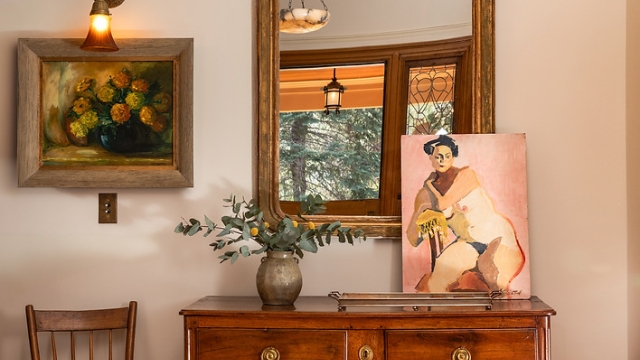
As we step into 2024, the world of interior design continues to evolve, embracing fresh ideas and innovative concepts that transform spaces into havens of comfort and style. This year, homeowners and designers alike are focusing on creating environments that reflect personal narratives while also promoting sustainability and well-being. The landscape of interior design is not just about aesthetics; it’s about fostering a deeper connection with our living spaces.
Emerging trends this year are all about balancing functionality with artistic expression. From biophilic designs that bring the beauty of nature indoors to the bold use of color and texture, the ideas shaping our interiors are as diverse as the people who inhabit them. Join us as we explore these exciting trends, offering inspiration and insights on how to revitalize your space and make it truly your own.
Sustainable Materials
As we move into 2024, sustainable materials are at the forefront of innovative interior design trends. Designers are increasingly prioritizing eco-friendly choices that minimize environmental impact and promote healthier living spaces. Materials like bamboo, reclaimed wood, and recycled metals are gaining popularity for their durability and aesthetic appeal. These options not only contribute to sustainability but also add unique character and warmth to interiors.
The rise of biophilic design is influencing the selection of materials, with a focus on those that connect the indoors with nature. Natural stone, organic textiles, and finishes that emulate the textures and colors found in nature are in demand. This trend not only enhances the visual appeal of a space but also fosters a sense of tranquility and well-being, making homes feel more inviting and serene.
Moreover, manufacturers are innovating by creating sustainable alternatives to traditional materials. For example, bio-based plastics, upcycled textiles, and low-VOC paints are becoming widely available, allowing designers to create beautiful spaces without compromising on sustainability. By embracing these innovative materials, homeowners can transform their interiors while actively contributing to environmental conservation and supporting a more sustainable future.
Smart Home Integration
In 2024, the fusion of technology and design continues to gain momentum, transforming interiors into smarter living spaces. Homeowners are increasingly seeking ways to incorporate technology seamlessly into their environments, enhancing both convenience and aesthetic appeal. From voice-activated systems to automated lighting, smart home integration is not just about functionality; it’s about creating an effortless lifestyle that harmonizes with individual design preferences.
This year, we are witnessing a shift towards more sophisticated home automation that prioritizes user experience. Designers are now focused on creating spaces that allow for intuitive interaction with technology, enabling residents to control their environment through simple gestures or commands. Smart mirrors that display information and adjust lighting, thermostat systems that learn user behaviors, and intelligent security features are becoming staples in modern homes, complementing stylish interiors with cutting-edge capabilities.
Moreover, sustainable technology is on the rise in interior design, contributing to both efficiency and aesthetics. Homeowners are looking for eco-friendly solutions that integrate into their spaces while promoting a greener lifestyle. Solar panels, energy-efficient appliances, and smart energy management systems not only reduce carbon footprints but also align with the minimalist and functional designs that are trending this year. As smart home integration evolves, it continues to redefine the boundaries of interior design, crafting spaces that are as intelligent as they are beautiful.
Bold Color Palettes
As we move into 2024, bold color palettes are making a significant statement in interior design. Vibrant hues are no longer confined to accent walls or small decor items; they are now embraced for entire rooms. Rich, saturated colors such as emerald green, deep navy, and vibrant terracotta create a striking atmosphere that promotes a sense of warmth and comfort. Designers are encouraging homeowners to experiment with bolder choices that reflect personal style, moving away from neutral tones that have dominated the past decade.
Layering colors is a key aspect of this trend, allowing for a dynamic interplay between shades and textures. By mixing different bold colors and incorporating varying materials, spaces become visually engaging and full of character. For instance, pairing a mustard-yellow sofa with jewel-toned cushions can create a lively focal point in a living room. This approach not only energizes a space but also invites creativity and individuality into home design.
Additionally, the use of color is expanding beyond furniture and walls. Accessories such as rugs, art, and lighting fixtures are being chosen for their bold hues, creating cohesive designs that are harmonious and striking. Homeowners are encouraged to think of their spaces as canvases where they can express their uniqueness through color. As these bold color palettes take center stage, the potential for reinventing any space is truly limitless.
Discover Unique Interior Solutions
Multi-Functional Spaces
As we move into 2024, the trend of multi-functional spaces continues to gain momentum in interior design. Homeowners are increasingly seeking to optimize every square foot of their living areas, combining functions to create spaces that serve various purposes. This innovative approach not only maximizes utility but also enhances the overall aesthetic of a home, making it feel more open and comfortable. From incorporating foldable furniture to designing rooms that can easily transition from a workspace to a relaxing oasis, versatility is key.
Incorporating technology within multi-functional spaces is also a significant trend. Smart design solutions, such as integrated charging stations and modular furniture that can adapt to different needs, are becoming essential elements. These advancements allow for seamless transitions throughout the day, making spaces more efficient and user-friendly. For example, a living room can quickly transform into a home office, complete with smart storage options that help maintain a clutter-free environment.
The appeal of multi-functional spaces extends beyond practicality; it fosters a sense of creativity and personal expression. Homeowners are encouraged to think outside the box, utilizing colors, textures, and layouts that reflect their individual style while serving multiple functions. Whether it’s a guest room that doubles as a gym or a dining area that transforms into a workspace, these designs embody the spirit of modern living, combining aesthetics and functionality for a harmonious living experience.




